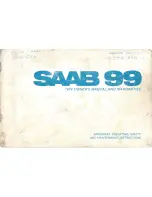
• When the malfunction indicator is illuminated, the system may not be able to
detect or signal low tire pressure as intended. TPMS malfunctions may occur for a
variety of reasons, including the installation of replacement or alternate tires or
wheels on the vehicle that prevent the TPMS from functioning properly. Always
check the TPMS malfunction telltale after replacing one or more tires or wheels on
your vehicle, to ensure that the replacement or alternate tires and wheels allow the
TPMS to continue to function properly.
NOTE:
Tire pressures change by approximately 1 psi (7 kPa) per 12° F (7° C) of air
temperature change. Keep this in mind when checking tire pressure inside a garage,
especially in the Winter. Example: If garage temperature is 68°F (20°C) and the
outside temperature is 32°F (0°C), then the cold tire inflation pressure should be
increased by 3 psi (21 kPa), which equals 1 psi (7 kPa) for every 12°F (7°C) for this
outside temperature condition.
CAUTION!
The TPMS has been optimized for the original equipment tires and wheels. TPMS
pressures and warning have been established for the tire size equipped on your
vehicle. Undesirable system operation or sensor damage may result when using
replacement equipment that is not of the same size, type, and/or style. Aftermarket
wheels can cause sensor damage. Do not use tire sealant from a can, or balance
beads if your vehicle is equipped with a TPMS, as damage to the sensors may result.
BRAKE
- Brake Warning Light
• The Brake Warning light illuminates when there is either a system malfunction or
the parking brake is applied. If the light is on and the parking brake is not applied,
it indicates a possible brake hydraulic malfunction, brake booster problem or an
Anti-Lock Brake System problem.
• Please have your vehicle serviced immediately.
WARNING!
Driving a vehicle with the red brake light on is dangerous. Part of the brake system
may have failed. It will take longer to stop the vehicle. You could have a collision.
Have the vehicle checked immediately.
- Malfunction Indicator Light (MIL)
• Certain conditions, such as a loose or missing gas cap, poor fuel quality, etc., may
illuminate the MIL after engine start. The vehicle should be serviced if the light
stays on through several typical driving cycles. In most situations, the vehicle will
drive normally and not require towing.
• If the MIL flashes when the engine is running, serious conditions may exist that
could lead to immediate loss of power or severe catalytic converter damage. We
recommend you do not operate the vehicle. Have the vehicle serviced immediately.
WHAT TO DO IN EMERGENCIES
118
Содержание Grand Cherokee SRT 2014
Страница 1: ...Includes SRT8 2014 Grand Cherokee User Guide...
Страница 8: ...DRIVER COCKPIT CONTROLS AT A GLANCE 6...
Страница 42: ...YOUR VEHICLE S SOUND SYSTEM ELECTRONICS 40...
Страница 43: ...ELECTRONICS 41...
Страница 126: ...3 Assemble the jack and jacking tools WHAT TO DO IN EMERGENCIES 124...
Страница 138: ...ENGINE COMPARTMENT 3 6L Engine MAINTAINING YOUR VEHICLE 136...
Страница 139: ...5 7L Engine MAINTAINING YOUR VEHICLE 137...
Страница 140: ...6 4L SRT Engine MAINTAINING YOUR VEHICLE 138...
Страница 164: ...NOTES 162...
Страница 165: ...NOTES 163...
Страница 166: ...NOTES 164...
Страница 167: ...NOTES 165...
Страница 168: ...NOTES 166...
Страница 169: ...NOTES 167...
Страница 170: ...NOTES 168...
















































